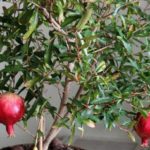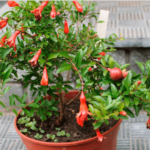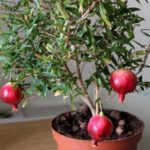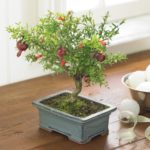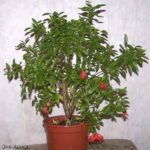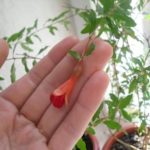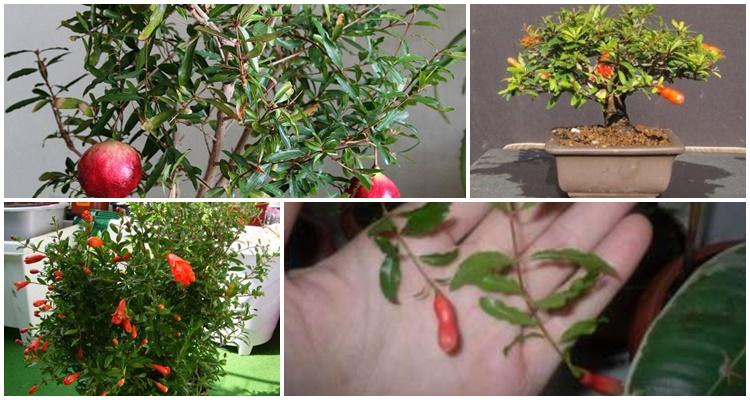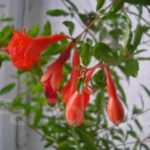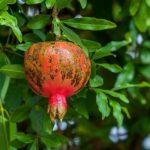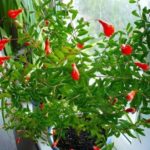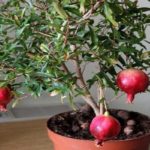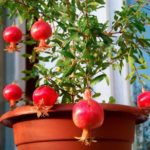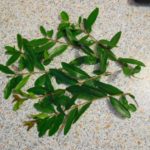Growing fruit-bearing trees on a windowsill has long gained popularity. Not only lemons, oranges, kiwis, but also pomegranates are grown in the room. Let's consider the intricacies of growing Baby pomegranate, its pros and cons, care features in detail, protection from major diseases and pests. When to start collecting fruits and how to store them at home.
General description of the plant and its characteristics
The height of the Baby pomegranate bush is no more than 50 cm. Despite its small growth, the tree is capable of blooming and bearing fruit. The fruits are small, only 3-4 cm in diameter. The taste is reminiscent of an ordinary pomegranate. An indoor pomegranate bush consists of 5-7 shoots. It is also formed into a tree, but this is more difficult to do, and the plant itself will be fragile. The leaves are small, green, shiny. In the fall they fall off, which indicates the onset of a rest period, and not a disease. The flowers of the Baby variety are large and located at the tops of the stems. The color of the petals is bright, red. The flowers that first appear on a young pomegranate are torn off.
The plant blooms profusely, but predominantly with male flowers. To set fruit, female flowers must be pollinated artificially with pollen.
Advantages and disadvantages
The disadvantages, according to gardeners, are insignificant and do not prevent both experienced and novice owners from growing Baby pomegranate.
Subtleties of cultivation
Baby pomegranate is grown from seeds at home and cuttings. Seeds are selected from large, completely healthy and ripe fruits. They are sown in a nutritious light substrate. The pot is covered with film. Moisten the soil and place the pot in a warm place. After 3 months, the seedlings are transplanted into new pots. Cuttings are cut from a healthy fruiting pomegranate and rooted in a loose substrate. Afterwards they are transplanted into separate pots.
Pomegranate care
Conditions in which it will grow indoor pomegranate, depend on the person. It is necessary to monitor the temperature and humidity of the air, and the level of lighting. Choose the right soil, water and fertilize the plant in time. Once a year you will need to trim the branches to form a crown.
Lighting
Baby Garnet loves warmth and light. The pot is placed in a bright and open place on the south and south-east window. In hot weather, the plant is shaded. The bush requires 10-12 hours of daylight throughout the season, so in winter it is illuminated with a lamp.
Temperature
In summer the temperature should be 20-25 ˚С, from the second half of autumn – 15 ˚С. At this time, a dormant period begins, the plant rests. In summer you can take the pot out onto the balcony. While it is warm, the humidity in the room can be normal; in winter, the air needs to be humidified or the plant itself needs to be sprayed, moistening the leaves. Incorrect temperature and humidity conditions can lead to the fact that the plant will not bloom and bear fruit.
Required soil
Baby pomegranate grows well in light, soft, fertile soil. It should not be dense so that when watering, water is freely absorbed. The substrate must be loose so that air can pass into it. The reaction is neutral. Suitable for planting pomegranates soil for begonias, rose
Watering
Water Baby pomegranate sparingly. When it blooms, watering is reduced; in nature, the plant blooms during the dry period. When the fruits set, watering is increased again. During the rest period, in autumn, water rarely. Do not overdry or overwater the soil; moisture disturbance has a detrimental effect on the roots. Water with warm, settled water. After watering, the soil is loosened.
Fertilizer application
Fertilize pomegranate with liquid or granular ready-made complex fertilizers.The use of complex mixtures is convenient; it is enough to dilute the required amount of fertilizer in water and water the plant. Before the dormant period, pomegranate is fertilized 1-2 times a month.
Rest period
Lasts 3 months, from November to February; When the bush is resting, fertilizers are not applied. Watering is reduced to a minimum (once a month), since at this time the plant consumes very few nutrients.
Transfer
Baby pomegranate, which is under 3 years old, is replanted once a season by transferring it into a pot slightly larger in diameter and volume (by 0.5 liters). The remaining space is filled with fresh substrate. An adult bush is replanted after 3 years; for a specimen older than 6 years, the volume of the pot is not increased. It remains the same - 4-5 liters.
Crown formation
Pruning is done in February-March, removing excess shoots. In adult pomegranates, 5 growth points are left on the shoots, and the root shoots are removed. The bush is formed from 5-6 main branches. Branches older than 5 years are cut to zero. Pomegranate blooms and bears fruit on 1-year-old shoots, so they are left as long as planned for the harvest.
Protection from diseases and pests
Baby pomegranate often suffers from root rot, which occurs due to waterlogging. You can save the plant by urgently replanting it in a fresh substrate. Pests – spider mites, scale insects, aphids. They are treated with insecticides, preventative and therapeutic.
Collection and storage rules
The fruits ripen in winter; when they are ripe, they turn red-orange and the skin dries out. Store ripe pomegranates in the refrigerator along with fruit. They keep in the cold for several months. The miniature Baby pomegranate is easy to grow in a room or on a balcony. The bush can grow in a regular flower pot.It is not difficult to care for it; you must remember to water, fertilize, loosen the soil and spray with water.

